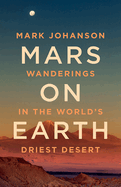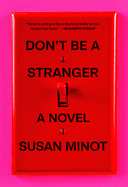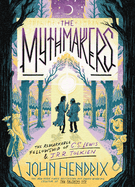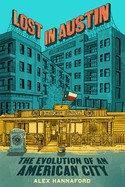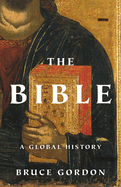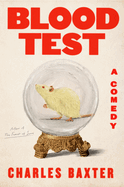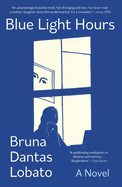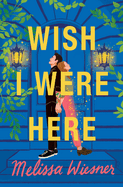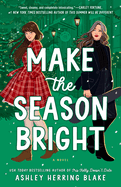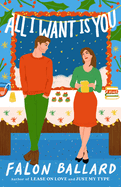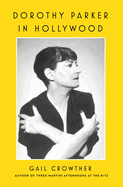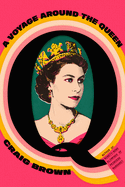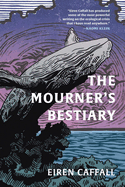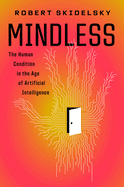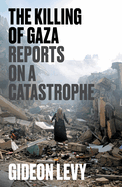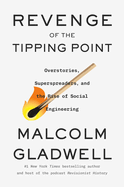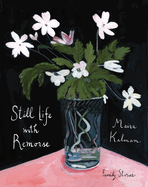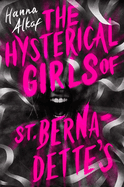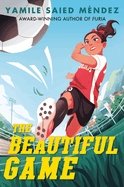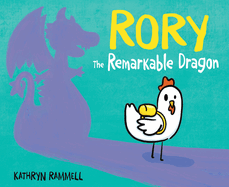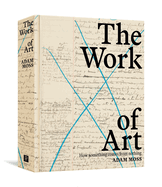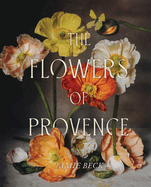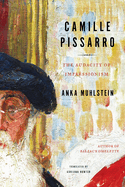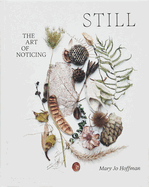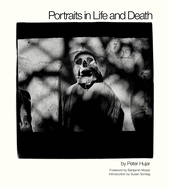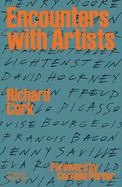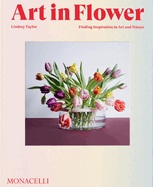Friday, October 18, 2024
This week's book highlights are ready to take readers around the globe, back in time, and deep into human consciousness as we consider Mars on Earth, the captivating and lyrical travel memoir by American Mark Johnson, describing his expatriation to Chile and the beauty of the Atacama Desert; and Lost in Austin, British journalist Alex Hannaford's well-researched evaluation of the famously "weird" Texas capital; as well as The Bible: A Global History, Bruce Gordon's gripping account of literacy, bookmaking, and power; and Mindless, Robert Skidelsky's thoughtful reflection on AI and its implications for humanity's future. Plus, in Pick the Lock, A.S. King relies on her signature surrealism for a sensitive look at the emotional reality of domestic abuse faced by 16-year-old Jane as she finds empowerment and freedom.
In The Writer's Life, artist Maira Kalman highlights the subtle nuance that separates remorse from regret in discussing her new book, Still Life with Remorse, a charming, insightful, sometimes wistful collection of personal anecdotes and arresting illustrations.
Don't Be a Stranger
by Susan Minot
Susan Minot's Don't Be a Stranger is a penetrating, achingly honest novel of sexual attraction and self-discovery. In her early 50s, Ivy Cooper, a loving single mom to her son, meets someone who upends her world and causes her to reflect on who she is and what she truly wants.
Ansel Fleming is a singer/songwriter and musician; Ivy is a writer. For him, songs come easily; for her, writing is a struggle. When Ansel asks her how she likes writing, Ivy thinks, "Writing filled up spaces she hadn't known were empty." But what she says is "she still didn't really think of herself as a writer, writing was just the thing she did." Minot uses no quotation marks, literally indicating on the page Ivy's ongoing struggle to decide how much of herself to reveal, and how much to keep hidden. As her obsession with Ansel grows, she sacrifices more of herself. Ansel comes to occupy an ethereal presence in Ivy's life, and she dispenses with the analytical and surrenders herself to the present moment. She longs to move through the world this way, but isn't sure she can.
Minot (Thirty Girls) creates a profoundly sympathetic heroine in Ivy. Readers will root for Ivy both as she succumbs to her obsession with Ansel, and then as she tries to conquer it. The title is as much about meeting a stranger as it is about becoming one to yourself. Yet, in Minot's expert hands, the stranger inadvertently leads Ivy back to herself. The sexy scenes and piercing insights will have readers madly flipping the pages to see how this Ivy comes out. --Jennifer M. Brown, reviewer
Discover: Who is the stranger in Susan Minot's piercing, keenly observed novel of sexual obsession: Is it the man Ivy meets or is Ivy a stranger to herself?
Blood Test: A Comedy
by Charles Baxter
If you had a chance to take a blood test that would predict your future behavior, would you do it?
That's what small-town Ohio insurance salesman Brock Hobson, the protagonist of Blood Test: A Comedy by veteran novelist Charles Baxter (The Sun Collective) decides to do. In this disarming tale of love, family, and the things that give our lives meaning, the consequences of that decision are both startling and hilarious.
Brock makes an "impulse purchase" of an expensive blood test offered by the vaguely described company Generomics Associates of Cambridge, Mass. When the results come back--boasting an accuracy rate of 94%--they reveal he will engage in criminal behavior, or as the doctor informs him, "felonies are definitely in your future." Indeed, in a follow-up call, a Generomics representative ominously warns him, "We see a murder. Committed by you."
Brock is a "low-wattage sort of person," an appealing everyman who possesses a vivid imagination and a droll sense of humor. He has such an orderly life he's known to his family as "Mr. Predictable"--manifested in his status as a respectable businessman who teaches Sunday school and prides himself on his charitable inclinations. So these dire prophecies provoke for him an understandable psychological and emotional tailspin, and the true joy of Baxter's story comes as he carefully peels back the layers of Brock's life to reveal the angst bubbling beneath its placid surface. Anyone who has ever felt overwhelmed by moments of sheer absurdity amid the pace of life in 21st-century America will identify with Brock Hobson's pain and pleasure and celebrate Charles Baxter's skill in capturing it. --Harvey Freedenberg, freelance reviewer
Discover: A small-town businessman submits to an unconventional blood test that radically changes his outlook on his quiet life.
Dogs and Monsters: Stories
by Mark Haddon
Though he's best known for his award-winning novel The Curious Incident of the Dog in the Night-Time, English writer Mark Haddon is equally talented when it comes to short fiction.
In Dogs and Monsters, as in his first collection, The Pier Falls, Haddon has an affinity for updating Greek and other myths, with half these stories featuring that provenance. "The Mother's Story," a beautiful and tender description of maternal love, is a retelling of the tale of the Minotaur from the perspective of the queen. "D.O.G.Z" reimagines the story of Actaeon, a hunter who's turned into a stag after he witnesses the goddess Diana and her attendants bathing. As the collection's title suggests, it's one of multiple stories that feature canines.
In "My Old School," Haddon demonstrates his ability to create appealing fiction independent of any mythic foundation. Its narrator reflects from a distance of more than 30 years on an incident in his English boarding school when he betrayed a confidence shared by one of his classmates. He experiences the consequences of that transgression during their school days, but fully realizes them only when he makes a casual decision to attend a class reunion in middle age.
Dogs and Monsters concludes with "St. Brides Bay," an elegiac story Haddon says is something of an homage to Virginia Woolf. In it, the narrator reflects on her long-ago love for a woman named Lucy, as well as her mother's "life spent polishing the boot that stood on her own neck." It's yet another of the fine examples in this collection of Mark Haddon's empathy for the human condition. --Harvey Freedenberg, freelance reviewer
Discover: In eight well-crafted stories, Mark Haddon revisits several Greek myths as well as showcases equally creative original material.
Blue Light Hours
by Bruna Dantas Lobato
National Book Award-winning translator Bruna Dantas Lobato makes her authorial debut with Blue Light Hours, a subtle, contemplative story of a mother and daughter divided by 4,000 miles, who come together via screentime and memory. With love, care, quiet humor, and pervasive yearning, this thoughtful story explores the dilemmas of coming of age and leaving home, the tension between separation and connection.
On a full scholarship, the daughter departs her home in Natal, Brazil, "prepared to brave the world, even if it hurt me," for a liberal arts college in a remote part of Vermont, leaving behind a mother who suffers from insomnia, migraines, and depression. The daughter navigates unfamiliar culture, food, and language, while the mother observes her first Christmas alone. The daughter feels guilt, torn between two very different lives. Both women rely on their Skype calls: "On the shiny blue screen, there was my mother, my friend, the only person who always knew me." This story is told in three sections, "Daughter," "Mother," and "Reunion,” but "Daughter" occupies the bulk of the book, so that readers see her loneliness and her striving to make a new life work, even as she worries about what she's left behind.
Blue Light Hours documents with wisdom and tenderness what is gained and lost when one leaves a home to build another, and the less universal experience of putting a 27-hour flight between mother and child. It tells painful, beautiful truths: with independence comes loneliness as well as freedom, and raising a daughter also involves losing her. Dantas Lobato's careful, lovely prose will linger long after these pages end. --Julia Kastner, librarian and blogger at pagesofjulia
Discover: A mother and daughter separated by continents navigate distance and intimacy through the "miraculous blue light" of video calls in this haunting debut.
Science Fiction & Fantasy
House of Frank
by Kay Synclaire
In Kay Synclaire's thoughtful debut novel, House of Frank, Saika, a lonely and grieving witch, follows the directions of an old ad: "Once you see the bright red door, you'll know you're home." Her sister, Fiona, is gone, and had one last request for Saika. But bringing Fiona to Ash Gardens, a magical arboretum where she had wished to be laid to rest, is proving harder than Saika imagined. When she finally stumbles there on a stormy night, Saika meets Frank, the caretaker-beast who runs Ash Gardens. He invites Saika to stay until she is ready to plant Fiona's ashes so that they will grow into a tree and she will live on in a different form.
Saika is not the only one staying at Ash Gardens, and she bonds with the other residents as they help those who come to the arboretum to say goodbye. But those bonds come with a price, and while Saika tries to keep her secrets to herself, she uncovers deeper ones that may ruin them all, along with her new home.
House of Frank weaves compelling characters, evocative prose, and a touch of magic. Synclaire has filled these pages with love amidst grief, showing that the pain of losing someone is not singular and is grappled with in many different ways. A stunning tale of learning to let go, Synclaire's House of Frank creates a space for sitting with grief that reminds readers that death is not the end, and those we lose remain with us in different ways. --Michelle Anya Anjirbag, freelance reviewer
Discover: Synclaire's evocative debut weaves together love and loss in a beautiful tale that readers surely will to want to return to.
Romance
Wish I Were Here
by Melissa Wiesner
Wish I Were Here by Melissa Wiesner (The Second Chance Year) is a fun, open-hearted romantic comedy about a precise mathematician whose world is turned upside down due to a case of missing identity.
Catherine Lipton of Pittsburgh, Pa., is thrilled when she's offered a university professorship. However, when the college is verifying her paperwork, the single, 29-year-old learns she doesn't exist. Her birth certificate and Social Security information don't appear in any government databases. This forces Catherine to find a way to substantiate her existence.
Catherine seeks the help of her free-spirited, bohemian father, who has spent years pursuing his dreams of performing as a clown (juggling is his specialty). He raised her alone after Catherine's mother left them when Catherine was very young, and now refuses to help Catherine search for the woman who might retain the documents Catherine needs for her dream job. Desperate, Catherine accepts help from Luca Morelli, the handsome, tattooed, artsy doorman at her apartment building, which is filled with jovial octogenarians. The somewhat sinister connections offered by Luca and those in his orbit draw Catherine into unexpected complications while offering readers amusingly plotted twists and turns.
Female protagonists whose lives comedically derail and force them to change are hallmarks of Wiesner's cleverly inventive rom-coms. In Wish I Were Here, she builds on this foundation with great charm and wit. --Kathleen Gerard, blogger at Reading Between the Lines
Discover: This open-hearted rom-com follows an exacting mathematician who sets out on a journey of self-discovery with help from her handsome, artsy doorman.
Make the Season Bright
by Ashley Herring Blake
Ashley Herring Blake's Make the Season Bright is a charming stand-alone sapphic Christmas rom-com. Musicians Brighton and Charlotte have known each other since they were 12, and were certain they were the loves of each other's lives. But five years ago, Brighton left Charlotte at the altar and Charlotte still hasn't recovered. When their Christmas plans find them not only in the same small town but also in the same house, they are forced to face what happened.
Jam-packed with a fun and diverse cast of characters and holiday merriment, Make the Season Bright is exactly what readers would expect from Herring Blake (Delilah Green Doesn't Care; Astrid Parker Doesn't Fail). Of course the town is a little too good to be true--it's Christmas! Of course they get snowed in--it's Christmas! There are cookies and carols and references to many 1980s and '90s Christmas movies.
The music careers of both main characters provide appealing subplots and additional conflict. Brighton is a former member of a band that only recently went viral, and Charlotte plays in a successful string quartet headed on tour; Herring Blake deftly incorporates all of this into the novel.
Make the Season Bright is a wonderfully modern and refreshing take on the classic small-town Christmas romance. There's a meddling mother. There's also a local dating event, but everybody talks to everybody; there is no assumed heterosexuality here. The author thoughtfully includes content warnings regarding sex, drinking, parental neglect, and claustrophobia, which many readers may appreciate. Lovers of holiday rom-coms will enjoy the cozy, sexy Make the Season Bright. --Alyssa Parssinen, freelance reviewer and former bookseller
Discover: Exes are forced to reunite at Christmas in Ashley Herring Blake's charming, refreshing take on the classic small-town holiday romance in Make the Season Bright.
All I Want Is You
by Falon Ballard
Falon Ballard (Right on Cue; Just My Type) draws on her experience as a romance author to create a swoon-worthy literary love story between two romance writers. Jessica Carrington and Nick Matthews met at a creative writing workshop, sparking their flame through critiquing each other's work. They began their careers as authors and even sold their first books to the same publisher. Their love story was perfect enough to be a romance novel--until five years ago, when Nick broke up with Jess two weeks after Christmas.
On top of tainting her favorite holiday, Nick became Jess's professional rival: his romance novels, which don't have happy endings, are all bestsellers, while Jess's happily-ever-after rom-coms don't earn enough for her to quit her day job. Forced together at their publisher's annual holiday ball at an inn in upstate New York, tension between the two reignites their creative and romantic sparks. Jess's night snowballs from bad to worse when the inn's clerk tells her they don't have a room for her and that they're all snowed in for the night.
With no other options, Jess accepts Nick's offer to stay in his room, "which, of course, happens to have only one bed." With the exes stuck in an idyllic inn, the scene is set for Ballard's cozy romance. No strangers to quotable witty banter and steamy sexual tension, Jess and Nick channel their undeniable chemistry into their work and consider what would happen if their fiction were to become fact. All I Want Is You is a festive, enemies-to-lovers romance that brims with Christmas cheer and second chances. --Clara Newton, freelance reviewer
Discover: Falon Ballard's holiday rom-com overflows with cozy Christmas cheer and a spicy second chance at love between two romance authors trapped in a cozy inn.
Graphic Books
Adrift on a Painted Sea
by Tim Bird, with paintings by Sue Bird
With obvious admiration and poignant longing, British comics maker Tim Bird memorializes his late mother, artist Sue Bird, in Adrift on a Painted Sea, a loving showcase of her life in paintings. Although Sue painted for much of her life, her work was exhibited just once when, as a schoolgirl, her marine still life hung in "the big art gallery in town" after winning a competition: "It looked like it belonged in a museum," he remembers.
Bird reveals glimpses of Sue's artistic life in crisp panels dominated by blue, orange, and gray. In particular, "she loved to paint the sea." He notes, "She created an enormous body of work." Bird built Sue a website to share and sell her paintings, but the technology overwhelmed her, and Bird was too busy to help further. "She was never really interested in selling her work though. She enjoyed creating it and that was enough for her." After her death, her family discovered the winning competition letter and exhibition catalog, and the discrepancies they found set in motion a mystery that would "go unanswered": "There were so many things I wanted to ask her. So many things I wanted to talk with her about."
What Bird does know of Sue affectingly fills his pages, which combine her gloriously rich paintings with his simpler line-drawn comics. Most memorable are when their disparate styles become multilayered collaborations: Sue's seascape in textured oils, adorned with Bird's boxed sketches of a seagull and a windblown hat. Mother and son produce a lingering homage to family, creativity, and the everlasting power of art. --Terry Hong
Discover: British comics creator Tim Bird collaborates with his late painter mother to showcase her life and art in glorious panels filled with memories and mystery.
Biography & Memoir
Dorothy Parker in Hollywood
by Gail Crowther
These days, Dorothy Parker is better known for her quick wit and the barbs she would dispense as a member of the famed Algonquin Round Table than for her poems, stories, or other work, especially her years spent writing for Hollywood movies. This era of Parker's life is detailed in Gail Crowther's highly accessible biography Dorothy Parker in Hollywood. Casual fans of the literary icon might not know she won an Oscar for her work on the screenplay for A Star Is Born or the extent to which she loathed her time writing for the silver screen. In fact, Crowther's book acknowledges the many unknowns concerning Parker's life, whether due to paltry archival evidence, studio refusals to credit their writers, or even to Parker's own elusiveness. But Crowther insists the uncertainty is all part of the story, calling it "classic Parker. Both there and not there, both famous and hidden, both forgotten and remembered, both known and unknowable."
Crowther frequently provides a contemporary gloss, distinguishing between the conventions of the era and the norms accepted by today's readers. In this way, she is able to address Parker's life through a feminist lens, scrutinizing her choices while never fully condemning her missteps. Crowther attributes Parker's restlessness to being a woman outside of her time. She argues, "All too often, women who refuse to conform must live and die with this temporal displacement," and Parker certainly refused to conform. Though her story was rarely if ever a happy one, Parker continues to fascinate, and Crowther's biography is a welcome addition to the effort to understand such a complicated woman. --Sara Beth West, freelance reviewer and librarian
Discover: Biographer Gail Crowther offers an insightful look at the ever-fascinating Dorothy Parker, particularly the years she spent in and out of Hollywood as a screenwriter.
Q: A Voyage Around the Queen
by Craig Brown
Q: A Voyage Around the Queen by Craig Brown (150 Glimpses of the Beatles; Ninety-Nine Glimpses of Princess Margaret) wonderfully stretches the limits of biography to include reportage of all kinds, however tangentially related to Queen Elizabeth II and the global public's perception of her.
The chapters are driven more by topic rather than chronology. Brown tracks and remarks upon such disparate topics as the queen's coronation day preparations; the experiences of people like Cecil Beaton and Jean Cocteau, who attended the event or watched it on television, and the Duke and Duchess of Windsor, who were not invited; and the decades-long career of a Queen Elizabeth impersonator. There's even an analysis of how the queen's pronunciation of words shifted over her lifetime, along with a mimic's guide. No topic is too remote, and each one is riveting and insightful.
Throughout, Brown investigates what the role of queen means, more than what the queen herself does. "A hallmark of the Queen's long reign," he writes, is that "those who look at her see their own outlook reflected back."
From the mundane to the extraordinary, Brown skillfully weaves the queen into the fabric of everyday life, creating a treasure trove of detail and exposition. This is a remarkable work that will appeal equally to readers well versed in all things related to the British royal family and those who've never considered reading a word about them. --Elizabeth DeNoma, executive editor, DeNoma Literary Services, Seattle, Wash.
Discover: Craig Brown's Q is a fascinating and utterly unique cultural study with Queen Elizabeth II as its point of departure.
The Mourner's Bestiary
by Eiren Caffall
Eiren Caffall's debut, The Mourner's Bestiary, is an ardent elegy for her illness-haunted family and for the ailing marine environments that inspire her.
For centuries, the author's family has been subject to "the Caffall Curse": polycystic kidney disease, a degenerative genetic condition that causes fluid-filled cysts to proliferate in a person's enlarged kidneys. PKD can involve pain, fatigue, high blood pressure, kidney failure, and a heightened risk of brain aneurysm. Given Caffall's paternal family history, she expected to die before age 50.
Caffall's melancholy memoir spotlights moments that opened her eyes to medical and environmental catastrophe. When she was nine years old, she and her parents vacationed at a rental cottage on Long Island Sound. They nicknamed the pollution-ridden site "Dogshit Beach"--her mother spent idyllic childhood summers there, yet now "both the ecosystem and my father were slipping away." For the first time, Caffall became aware of her father's suffering and lack of energy. She realized that she, too, might have inherited PKD and could face similar struggles as an adult.
The book draws fascinating connections between personal experiences and ecological threats: "the Sound was dying, hypoxic... from an overwhelm of nutrients flooding an ecosystem--nitrogen, phosphorus, imbalanced saline--the same things that overwhelm a body when kidneys can no longer filter blood properly." Re-created scenes enliven accounts of family illness and therapeutic developments. The lyrical hybrid narrative, informed by scientific journals and government publications, is as impassioned about restoring the environment as it is about ensuring equality of access to health care. Personal and species extinction are just cause for "permanent mourning," but adapting to change keeps hope alive. --Rebecca Foster, freelance reviewer, proofreader, and blogger at Bookish Beck
Discover: This impassioned memoir blends memory and research to pay tribute to family members lost to a genetic kidney disease--and to marine creatures threatened by ecological collapse.
History
Lost in Austin: The Evolution of an American City
by Alex Hannaford
Alex Hannaford's sharp-eyed, thoroughly researched second book, Lost in Austin, examines the outsize myth and the complicated reality of the famously "weird" Texas capital. Long known for its live music, dance halls, tasty tacos, and relaxed vibe, Austin has experienced massive growth in the last several decades, and Hannaford argues that growth has changed the city almost beyond recognition. A British journalist who fell in love with Austin on a 1999 road trip and eventually made it his home for nearly 17 years, Hannaford delves into his adopted city's history, the forces that shaped its vibrant personality, and the countering forces--including climate change, immigration policies, and the infiltration of big tech--that threaten to replace Austin's uniqueness with slick corporate slogans.
To understand Austin's present, Hannaford explores its past: the origins of Austin's reputation for live music, the genesis of its blockbuster SXSW festival, and the histories of some of its oldest neighborhoods, now threatened by gentrification. He interviews residents on topics such as homelessness and traffic, as well as persistently racist housing and land use policies. He also shares his own experiences as an Austinite: the good (tacos, music, community, abundant areas for water recreation) and the bad (increasing heat, rising rates of gun violence, the struggles immigrants, especially undocumented people, experience). Hannaford offers few solutions to the city's current problems, but his thoughtful analysis of the issues facing Austin could be a useful road map for other U.S. cities dealing with the ramifications of explosive growth. --Katie Noah Gibson, blogger at Cakes, Tea and Dreams
Discover: British journalist and former Austinite Alex Hannaford explores the effects of Austin's recent explosive growth on the city's famously unique personality.
The Bible: A Global History
by Bruce Gordon
The Bible by Bruce Gordon is not only a well-researched and thorough history of the Bible around the world but also a gripping account of literacy, bookmaking, and power. With an engaging conversational tone and a clear command of history, Gordon traces the Bible from its beginnings as a codex. He discusses the "two great surviving codices" of the fourth and fifth centuries and includes tantalizing asides, such as Napoleon Bonaparte's removal of one of those codices to Paris after he conquered Italy, and explains how the Bible's disparate parts continue to come together.
Gordon, a professor at Yale Divinity School, does an impressive job of respecting the faithful while laying bare the conflicts that arose around biblical interpretations, such as making war or permitting slavery. He provides examples of the powerful withholding text from congregations so clergy could retain exclusive interpretations, but also cites figures such as Samson Occom, author of the first printed book by a Native American, who quoted from the Bible to oppose "colonial oppression of Indigenous peoples"; and Frederick Douglass, who learned to read using the Bible, like many enslaved people, and highlighted the hypocrisy of Christians who held slaves. Gordon also discusses the Bible's influence on the music of Bach, Handel, and spirituals; the art of Rembrandt and Caravaggio; works by Chaucer, Milton, and C.S. Lewis.
Gordon seamlessly moves between the global stage (the tension between science and faith during the Renaissance, the rise of Puritanism) and specific individuals whose faith was nourished by their newfound access to the Bible. Whether zooming out or zeroing in, Gordon guides readers on a journey of a text he proves is still evolving. --Jennifer M. Brown
Discover: Bruce Gordon gracefully and ably guides readers through a worldwide history of a still-evolving text, citing figures who have shaped the Bible and how it, in turn, has shaped humankind.
Business & Economics
Mindless: The Human Condition in the Age of Artificial Intelligence
by Robert Skidelsky
It's almost impossible to visit any news source today without encountering stories about artificial intelligence. Many of those pieces are framed either in enthusiastic or apocalyptic terms, with historical or philosophical perspective often noteworthy for its absence. In Mindless, Robert Skidelsky helps to fill that gap with a thoughtful reflection on the role of technology in the development of Western civilization and its implications for humanity's future.
Skidelsky, a life member of the House of Lords and Emeritus Professor of Political Economy at the University of Warwick, comfortably displays his erudition in disciplines that include history, economics, politics, philosophy, and literature. He marshals his sources carefully to lay a strong foundation for his own skepticism about the views of those who assert technology's unfailing benignity, explaining that this crisp survey--one that brings to mind the work of writers like Yuval Noah Harari and Steven Johnson--is "primarily about how western civilization came to be captured by the dream of utopia through science and about the successive stages by which this dream turned sour."
Even as he points to the "continuing threat" of technological innovation to "rob ever-larger fractions of people of their employment, livelihood, status, skills, usefulness and identity, and finally make them redundant," Skidelsky recognizes that we are in the early days of a debate on a subject with profound implications for the future of humanity. His contribution with Mindless is one that should stimulate that debate, rather than stifle it, and anyone who wants to consider some of the fundamental questions that beg to be asked and answered will find it a useful starting point. --Harvey Freedenberg, freelance reviewer
Discover: Scholar Robert Skidelsky surveys the history of technology and reflects on its implications for the development of artificial intelligence.
Political Science
The Killing of Gaza: Reports on a Catastrophe
by Gideon Levy
A distinguished Israeli journalist who covers Gaza for Haaretz, Gideon Levy (The Punishment of Gaza) is a skilled messenger alerting his fellow citizens to the moral reckoning confronting their nation in Killing of Gaza: Reports on a Catastrophe. Levy's provocative second book places the attacks by Hamas on October 7, 2023, and the subsequent war at the core of its riveting narrative and collects his coverage--originally published in Haaretz from 2014 to 2024--of the Israeli occupation. Levy paints an unsettling portrait of generations of people deprived of basic freedoms and human rights.
The reality of Gaza, Levy contends, is "hidden from the eyes of the Israeli public" by a propaganda-driven media that dehumanizes Palestinians and encourages its audience to believe that their suffering and their rights are the only ones that matter. He urges Israelis to "sober up" to the horrors being committed in their name.
Beginning in 1987, Levy traveled regularly to Gaza for his reporting until the Israeli government revoked press access in 2006, after an Israeli tank shelled a nursery school minibus filled with Palestinian children. As he expands on this critical and haunting historical context, Levy passionately advocates for a one-state solution that is, in his learned opinion, the only viable option left to pursue. "The two-state solution," he states bluntly, "is dead. Seven hundred thousand Jewish settlers in the West Bank and East Jerusalem killed it."
Levy gracefully reminds readers that "it's always darkest before the dawn" and that they have a collective stake in ending both the Israel-Hamas war and the untenable occupation of Palestinian lands. --Shahina Piyarali
Discover: A distinguished Israeli journalist exposes the Israeli media's dehumanizing treatment of Palestinian suffering and urges his fellow Israelis to "sober up" to the horrors of occupation.
Psychology & Self-Help
Revenge of the Tipping Point: Overstories, Superspreaders, and the Rise of Social Engineering
by Malcolm Gladwell
Twenty-five years ago, Malcolm Gladwell published his first book, The Tipping Point, which identifies how small changes can cause major shifts. With Revenge of the Tipping Point: Overstories, Superspreaders, and the Rise of Social Engineering, he revisits the conclusions of that work, expanding and adapting them to current trends and mindsets. In an introductory note, Gladwell (Talking to Strangers; Outliers) explains how his debut "was a hopeful book that matched the mood of a hopeful time." While Revenge of the Tipping Point retains a positive focus, this highly engaging work conveys different signs for a different time: a sense of responsibility, a call for change, and an underlying concern for the consequences of inaction.
Throughout, Gladwell employs the strength of great teachers: an ability to distill complex ideas into accessible lessons. Such is the case with the overstory, a metaphor referring to the highest layer of tree-canopy coverage, "way up in the air, in many cases outside our awareness." It's what might be meant when someone claims there's "something in the water." But for Gladwell, it's not merely a hunch or vague feeling; instead, it "is specific. It is tied to a place. It is powerful. It shapes behavior. And it does not emerge out of nowhere. It happens for a reason." Revenge of the Tipping Point explains how and why it happens.
With that knowledge comes responsibility, of course. Noting the potential risks and rewards of social engineering, when people are "intentionally orchestrating the course of contagious behavior," Gladwell asserts, this knowledge can be a tool, one with the ability "to build a better world." --Sara Beth West, freelance reviewer and librarian
Discover: Malcolm Gladwell revisits the findings of his debut book in this highly engaging examination of the conditions that lead to rapid and dramatic change.
Travel Literature
Mars on Earth: Wanderings in the World's Driest Desert
by Mark Johanson
In his captivating travel memoir, Mark Johanson, an American expat living in Chile with his partner, describes being at something of crossroads as the Covid-19 lockdowns were lifting. His journalism career had stalled, and the ongoing political turmoil in Chile caused him to question his decision to settle there. He wanted to know his chosen home better, so he decided to take a solo trip through northern Chile and the Atacama Desert. Johanson explains that the Atacama is home to the world's largest reserve of lithium; it's "in your phones, your laptops, and your cars," but although billions of people rely on the desert's precious resource, very few people actually know much about the region.
Mars on Earth recounts Johanson's exploration. He covers the Atacama's history, including its pre-Colombian populations and their mummies, the conquistadors and their legacies, and the dictatorship of Augusto Pinochet and its failed policies. He delves into natural science, too, analyzing rainfall patterns, extreme elevation, and the clarity of desert night skies. But Mars on Earth is also Johanson's memoir, replete with reflections on being a gay man in the U.S. and Chile, and what it means to choose a new nation as his home.
With Johanson's haunting photographs and intriguing interactions with llama herders, Hindu-inspired hippies, an astrophysicist, and miners, Mars on Earth is fascinating. Johnson notes that deserts are often inhabited by those on the fringes of society. And while few readers may initially agree with his assertion that "deserts are places of utmost appeal," his lyrical descriptions of the Atacama's extreme landscapes might change their minds by the memoir's end. --Jessica Howard, freelance book reviewer
Discover: A gay American expat journeys through Chile's Atacama Desert in a quest to better know his adopted country in this fascinating travel memoir.
Art & Photography
Still Life with Remorse
by Maira Kalman
In the 39 entries and abundant (over 50) illustrations of Still Life with Remorse, Maira Kalman explores the many varieties of remorse, with humor and poignancy.
Fans of her previous works, such as Principles of Uncertainty and Women Holding Things, will recognize Kalman's charming, insightful, sometimes wistful meanderings about subjects as varied as her parents, Leo Tolstoy, and Clara Schumann. Her paintings include several of Tolstoy; Sarah Bernhardt "in bananas chapeau"; and the French poet Mallarmé, who "outdid all the rest in the looks department," and whose gray eyes seem to stare out from the pages. Her recollections of family, meanwhile, get "still life" treatments, in the loose lines of a Matisse, with telling objects such as the bouquet of flowers Kalman's father kept fresh at her mother's hospital bedside, and the "heavy black coat" that saved the life of a relative who "got involved with unsavory people/ Or he did something unethical./ It is unclear."
Such phrases as "It is unclear" or "Accounts differ" punctuate the entries. She balances weighty moments with witty, often gallows humor. Kalman's pièce de résistance may be "What Could Possibly Go Wrong?": "The Romanovs could have lived longer if they/ had just been a teeny bit nicer to their people.// But they had not an iota of remorse/ about anything.// Lenin and Stalin?/ Same same./ Not an iota of remorse.// This is lack of remorse on an epic scale."
Every unhappy family is unhappy in its own way, and yet Kalman assures readers that as long as there's music and art and flowers and laughter, there are moments of "merriment/ And good cheer," too. --Jennifer M. Brown, reviewer
Discover: Maira Kalman perceptively examines--with meaty anecdotes and abundant illustrations--the many forms of remorse as well as its antidote.
Children's & Young Adult
Pick the Lock
by A.S. King
In her 11th young adult novel, three-time Michael L. Printz Award-winner A.S. King employs her signature surrealism to portray the emotional reality of domestic abuse through an unflinching feminist gaze.
Pick the Lock follows 16-year-old Jane, who has rarely left her family's estate since March 2020. Her father used the Covid-19 pandemic as a pretext to keep Jane and her younger brother confined to their Victorian mansion, where he has locked her mother into the System, a network of human-sized pneumatic tubes that run throughout the house. When Jane finds a cache of what she calls "home movies," footage from hidden cameras around the house, she finally begins to understand "the truth about everything."
With breathtakingly successful ambition, King shifts between Jane's first-person, occasionally direct-address narration; Jane's descriptions of the "home movies," which enable King to move back and forth in time; Free Mother, the punk-rock libretto Jane writes in her mind "to stay safe"; and interstitials from the perspective of Brutus, who is ostensibly a pet rat.
To readers unfamiliar with King's oeuvre, that might seem like a lot, but Pick the Lock is King at her most accessible, in large part due to how quickly and firmly she anchors readers in Jane's corner. Readers whose lives have been impacted by abuse will want to take care when they engage with King's virtuoso depiction of how it can become normalized within families. Crucially, King also never allows readers to lose sight of the "tender, sweet love unconcerned with control or power" that ultimately empowers Jane to free herself and her family. Teen readers are lucky to have King in their corner. --Stephanie Appell, freelance book reviewer
Discover: A.S. King employs her signature surrealism to portray the emotional reality of domestic abuse through an unflinching feminist gaze in this breathtakingly ambitious and wildly successful novel.
The Mythmakers: The Remarkable Fellowship of C.S. Lewis & J.R.R. Tolkien
by John Hendrix
John Hendrix returns to the compelling style he employed in The Faithful Spy for The Mythmakers, a masterful graphic biography of C.S. Lewis and J.R.R. Tolkien told through narration, spot art, and comic panels. Hendrix guides readers on a mythic journey through the lives of the two literary luminaries, alternating between the authors' experiences and the adventures of a wise wizard and a witty lion.
Both Lewis and Tolkien lost their mothers early in life, but still benefited from childhoods that nurtured their love of stories. A stark difference in their upbringings was religious belief: Tolkien practiced Catholicism devoutly while Lewis "abandoned his Christianity and... made literature his true place of worship." The First World War called both young men into battle, and Hendrix deftly captures the horror of their experiences in emotional, sepia-saturated illustrations and gut-punching prose. Lewis and Tolkien met at Oxford in May of 1926 and Hendrix returns to the muted purples, teals, and yellows of the boys' early lives. Lewis and Tolkien bonded over a shared love of Norse mythology, and Hendrix's wise wizard explains, "Each man deeply needed the other though they did not realize it yet." During the next two decades they supported, challenged, and inspired each other--and made a huge impact on the world of fantasy literature.
Hendrix uses his lion and wizard narrators to fantastic effect, moving them through a fantasy landscape that brings them to pivotal moments in the lives of Tolkien and Lewis. He packs this delightful adventure with fascinating tidbits, background on myth and world-building, and plenty of humor. While the book's target audience is middle-grade readers, fantasy lovers of all ages will surely treasure this exquisitely fitting homage. --Jen Forbus, freelancer
Discover: Writer and illustrator John Hendrix examines the friendship of J.R.R. Tolkien and C.S. Lewis in a beautifully crafted graphic biography of two men who had an immense impact on fantasy literature.
The Hysterical Girls of St. Bernadette's
by Hanna Alkaf
Hanna Alkaf's The Hysterical Girls of St. Bernadette's is a gripping, dark academia YA thriller, set in a 112-year-old, prestigious all-girls school in Malaysia, where the students mysteriously have begun screaming.
St. Bernadette's has historically been known for educating Malaysia's brightest young women. Currently, though, it is known for something else: sudden and extreme hysteria. Sixteen-year-old Khadijah Rahmat has been silent since she was sexually assaulted by her stepfather three months ago. Classmate Rachel Lian, an almost 17-year-old over-achiever, is struggling to escape the shadow of her overbearing mother. Though both girls attend St. Bernadette's, their paths don't cross until Khadijah's little sister becomes the next screaming victim. Then, a screaming girl goes missing. Khadijah and Rachel, each dedicated to St. Bernadette's for their own reasons, decide they must uncover the truth, unaware they are working to reveal real-life monsters.
The novel builds steadily, using short chapters that alternate between Khadijah's and Rachel's points of view to captivate and thrill. Alkaf (The Girl and the Ghost) thoughtfully includes themes relating to family, bodily autonomy, sisterhood, sexual assault, and trauma as she compassionately develops both Khadijah's and Rachel's sensitive inner lives. The author is clear in her discussion of trauma, and how it affects not only the one harmed but those around them, too. The Hysterical Girls of St. Bernadette's depicts young women speaking out and showing up for themselves in a world that often silences and ignores them, and is an excellent read for fans of Anna-Marie McLemore. --Natasha Harris, freelance reviewer
Discover: In this captivating dark thriller, two teenage girls work together to uncover the dark secrets of their prestigious school after girls begin to scream hysterically.
The Beautiful Game
by Yamile Saied Méndez
A fútbol phenom struggles through a summer of tremendous change both on the field and at home in Yamile Saied Méndez's empowering, emotional The Beautiful Game.
Valeria Salomón is no "delicate flower." Vale, who plays for the two-time Utah State Cup-winning soccer team, the Overlords, and is the only girl in the league, is so skilled and plays so hard she has earned the nickname "Magic." But the 12-year-old is booted from her team after a flubbed match and a family emergency coincide with her first period. She lands with the Amazons, an equally elite girls squad. Vale has "proved [she] can play with the best of the boys. Now, can [she] use those skills to play with the best of the girls?" Despite emotional clashes with her Abuelo and repeated setbacks with her new peers, Vale puts in the work and becomes a true team player.
Méndez, winner of the Pura Belpré Award for Furia, crafts an impassioned story that features complex familial relationships and tender adolescent growth spurred by adaptability. Vale relatably struggles to define herself as a daughter and teammate, which her femininity further complicates: "I didn't hate being a girl, woman, or whatever. I just hated how the world treated me for being one." Méndez depicts acceptance of menstruation and annoyance at misogyny throughout, and her approachable writing soars when describing fútbol. Vale should find fans in readers of competitive soccer stories like Christie Matheson's Select as well as the Méndez-edited, period-positive collection Calling the Moon. A win for anyone who knows playing like a girl is a true compliment. --Kit Ballenger, youth librarian, Help Your Shelf
Discover: A 12-year-old fútbol phenom struggles in the face of family tensions and her new, all-girls squad in an impassioned and empowering middle-grade book from a Pura Belpré Award-winning author.
Rory the Remarkable Dragon
by Kathryn Rammell
Rory the Remarkable Dragon is the lighthearted, tongue-in-cheek tale of a small, white chicken in a big dragon world.
Rory, a "remarkable dragon," attends the Dragon Academy with "all the other remarkable dragons." On her first day, the students "take a loooong look at her..." because, well, clever readers will immediately notice that Rory is not a dragon--she's a chicken. Even though Rory's flight lessons and Pyro PE go poorly, she's embraced by her classmates and teacher, and becomes "the most popular dragon in the school." But the suspicious principal feels that something isn't right. When Rory doesn't eat the roast chicken served for lunch, the principal growls, "I knew from the start something was afoul with you! You're not a 'remarkable dragon.' You're a.../ VEGETARIAN DRAGON!" Rory's great discipline means she is ready to become the "youngest treasure guard in dragon history!"
Debut author/illustrator Kathryn Rammell presents an amusing tale of mistaken identity, and the fact that Rory is so clearly a chicken should make it easy for little ones to be in on the joke. Digitally created characters are full of personality: Rory's mismatched eyes somehow manage to convey multiple feelings without really changing; her orange teacher over-emotes; and the principal, with her oversized pink glasses and matching lipstick, is grumpily suspicious. Prominent text bubbles advance the waggish text and the fun-yet-valuable message that being true to yourself means you get to guard the treasure--or, actually, that simply being yourself is the greatest treasure of all. --Lynn Becker, reviewer, blogger, and children's book author
Discover: Rory the Remarkable Dragon is the lighthearted, tongue-in-cheek story of a chicken in a dinosaur world whose differences allow her to shine.
Encountering Art
The Writer's Life
Maira Kalman: What's Around You and What's Inside of You
 |
|
| Maira Kalman (photo: Kimisa H.) |
|
With more than 30 books for children and adults to her credit, as well as fine art exhibitions, New Yorker covers, and contributions to the New York Times, Maira Kalman has created images, often accompanied by wise, pithy, hand-lettered words, that are familiar to millions of readers. Still Life with Remorse: Family Stories (Harper, $35; reviewed in this issue) will delight fans of The Principles of Uncertainty and Women Holding Things. Here Kalman discusses the importance of still life paintings when pondering tales of remorse, plus music and walking.
How did you arrive at the title for the book?
I was hearing the word remorse everywhere I went, and I was reading it everywhere. And it seemed as if I had edited out all other words but remorse. At the same time, I was very interested in what it meant just to paint still lifes, and what it meant to just focus on the pleasure of painting flowers or a bowl of fruit, and what that kind of attention means--attention to detail and attention to the beauty of what is there. And attention to the tenderness.
I thought it was a perfect counterpoint. I was painting still lives, which had nothing to do for the most part with the stories. But they offered a kind of contemplative moment to think about what's around you, outside of you, and then to think of what's inside of you.
Tell us about the pairing of the image of the bowl of cherries on the red table with the white cloth over it, and the way that you pulled that into the story of your sister and polio and Picasso wooing Françoise Gilot.
Well, it started with Cézanne's cherries, of course. There was a beautiful show [of Cézanne], and I went back five times just to stare at that bowl of cherries. It was a watercolor or a gouache maybe. And the sense of whatever that was, of that moment from a hundred and more years ago, this is the meaning of life.
And then the story gets built in its way, which I hope has some humor in it, of course. And some tragedy, or pathos. I like to cut away and cut away as much text as I possibly can. So there's air and there's a sparseness.
Part of it is a mystery. How does a story come from somewhere into your brain? It's so lovely.
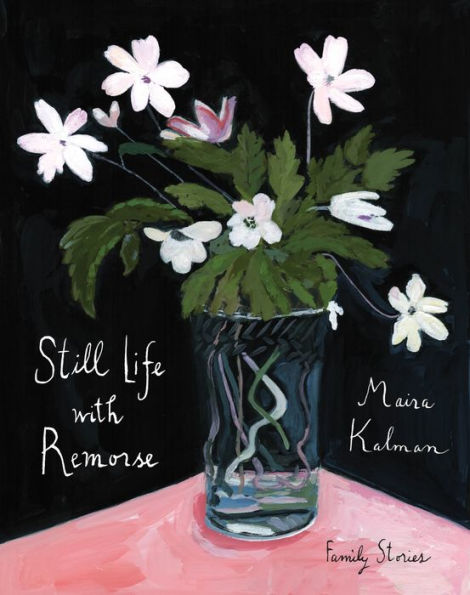 One still life that radiates that sense of remorse is the bouquet on the cover that accompanies the Kafka family story.
One still life that radiates that sense of remorse is the bouquet on the cover that accompanies the Kafka family story.
My son, Alex Kalman, who designs my books, and I decided that one said the most and would be very arresting on the cover.
But I have to say about Kafka--he's an obsession. And I just want to put in a plug for the new translation of Kafka's diaries by Ross Benjamin, where he pretty much has everything that was in the original [diaries] and that had been a little bit sanitized by Max Brod and other translations. It's just fantastic.
What resonates throughout [The Diaries of Franz Kafka] is that inconsistencies--being funny and smart and stupid and passionate and lazy, all of those things--are contained within a human being.
One of my favorite phrases in your book is "the possible-probable remorse tense," which comes up in "Uncle," when he almost gets lost at sea, and also in "Mrs. Pearlman's Son," who "could have drowned" at the beach.
In my family, and in many families, there's some sense of, oh, we're always on the brink of disaster, and we don't know how that will reveal itself during the day. And if it doesn't, it could have. We could have fallen on the street when we went to the post office, and we didn't, but we could have. And it's so present, this danger. And of course, you say, how dangerous can the day be, because the day is full of beauty and charm and delight.
But it's a counterpoint. As one gets older, those fears, what could be fraught in the day, reveals itself or presents itself. And you go, whoa, I could have, but I didn't. And I'm so happy I didn't, but ooh, I'm exhausted from what could have been, but wasn't.
You've written about your father before in The Principles of Uncertainty, and there you painted a portrait of him. But in this book, you tended to paint objects that told something about the people you discuss, like the bouquet that your father left for your mother.
When you look at old photographs, they're the snapshots of your life, obviously, moments frozen in time that you may or may not remember. Most of the time, I don't remember. Of course, when we were children, there's so much that happens. I wanted to write more about my father because I felt that he was always getting short shrift. And my mother was always the center of the story, the golden center.
So I had remorse about my father. And I think that it's not solved, it's not cured. It's just put into a place like, oh, this is really something that's very heartrending. And it's part of my story and part of my family story. So I was happy to give him some more attention.
And his story is so remarkable, that he and his brothers would leave Belarus and his parents stayed behind with their dry goods store and then perished in the Holocaust.
When I say that disaster lurks everywhere, I always say that the family lullaby was that we were in danger, and my father would tell us at night that anybody could come and kill us. So it wasn't some kind of conceptual idea. Despair and being destroyed by history and being destroyed by displacement echoes, of course. And then you respond to it, sometimes kindly, sometimes unkindly.
People often ask me, well, what's the difference between remorse and regret? And I say, regret is "I regret I can't join you for dinner." Remorse is "I'm sorry I ruined your life." There's a difference in the intensity. And usually remorse means you're deeply sorry for what you did to somebody else, or what you didn't do for somebody else. Even though--as I say in the book--at the time, there was no other choice. You couldn't do it, you couldn't be kinder, you couldn't be magnanimous. It seemed to be the right thing to do, whatever that was for anybody. And then you look back 20 or 30 or 50 years later and go, well, what else could have happened? But it's something that you say, look at what damage gets done. It's notable. Some people get over it, some people don't get over it, you know?
What was the inspiration for the musical interludes?
Well, music accompanies me all day long when I'm painting, there's music on, and it's mostly classical. And I say, "I want that piece for my funeral." My son and daughter are delighted to hear me ruminate about that all the time. The essence of music is so important. When you're eating ice cream, you can't be sad. I defy you to be sad when you're eating ice cream. The same thing about music. If you just allow yourself to listen to music, the emotions that go through you take you to a different place.
And those musical interludes are bittersweet, too.
Right, exactly. It's not as if all of a sudden you're laughing and jumping for joy. But you don't feel alone and you enter into this extraordinary world that gives you some kind of relief from your pain or worries. It's phenomenal. I believe that music can save your life, and I believe literature can save your life, and walking can save your life... and love, and work. And I'll go on with a list of 50 other things. I don't know what the antidote to remorse is, but I do know that there are things that you can do in your day that are just sublime. One of them is walking. And if you go to the arts, it's tangible. --Jennifer M. Brown, reviewer
Book Candy
Book Candy
"Authors Guild to offer 'Human Authored' label on books to compete with AI," Marketplace reported.
---
Engraved on a metal plate, U.S. Poet Laureate Ada Limón's 'In Praise of Mystery: A Poem for Europa' just began its journey to Jupiter's moon via NASA's Europa Clipper.
---
Mental Floss scared up 9 facts about Edgar Allan Poe's "The Raven."
Rediscover
Rediscover: How to Eat Fried Worms
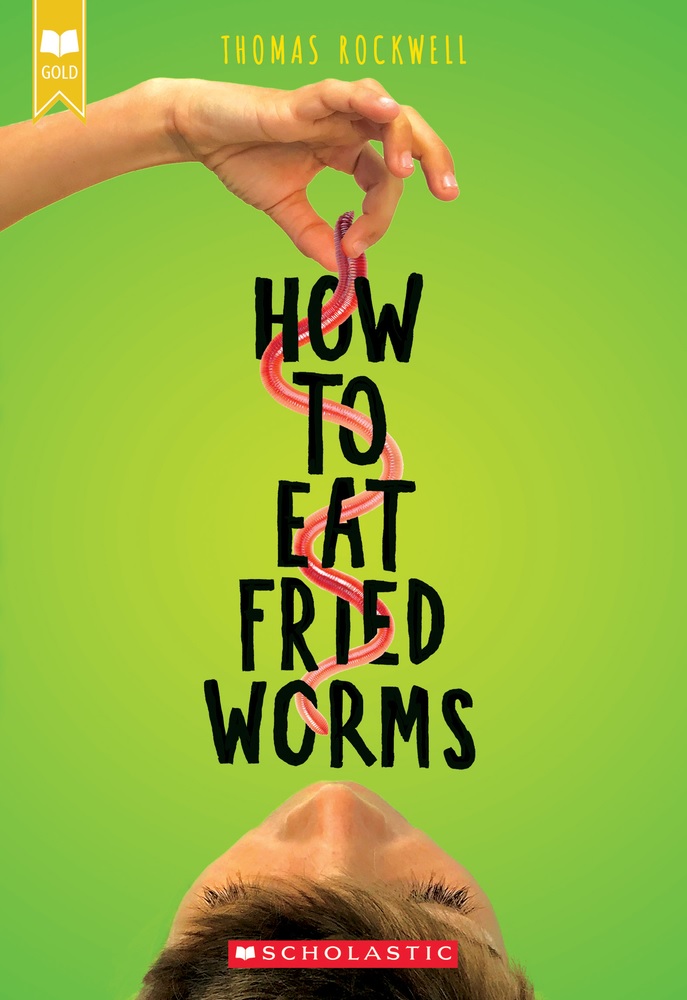 Thomas Rockwell, "who grew up as a character in the illustrations that his father, Norman Rockwell, created for the Saturday Evening Post and later became a successful author of children's books, including How to Eat Fried Worms, a gross-out novel devoured by millions of grade-school students," died September 27 at age 91, the New York Times reported.
Thomas Rockwell, "who grew up as a character in the illustrations that his father, Norman Rockwell, created for the Saturday Evening Post and later became a successful author of children's books, including How to Eat Fried Worms, a gross-out novel devoured by millions of grade-school students," died September 27 at age 91, the New York Times reported.
Rockwell appeared in several of his father's works: as a mischievous boy sitting at his sister's dressing table and reading her diary; flexing his not-very-big muscles in a mirror, a dog at his side; and as a high school graduate, in cap and gown, clutching a rolled-up diploma. One of his favorite memories was posing for a painting that depicted him rummaging through his grandfather's overcoat pocket.
Norman Rockwell wanted his children to become artists, even though he sometimes said otherwise. "He'd say he wanted us to go into business so that we could support him in his old age while he sat outside on the porch," Thomas Rockwell told Education Update in 2003. "But the truth is that my father couldn't understand why anybody would want to be anything else but an artist."
In his 20s, Rockwell owned a used-book store and harbored hopes of making a living as a writer when his father asked him to help write his autobiography, My Adventures as an Illustrator, which was published in 1960.
Two books followed, both written for children and adolescents: Rackety-Bang and Other Verses, a book of poetry, and Squawwwk!, a fantastical novel about a bird that hatches from a schoolbook and grows "as big as Yankee Stadium."
Although those books had only modest sales, that would soon change. In the early 1970s, Rockwell met with an editor in Manhattan about a manuscript he had sent her. "She hadn't liked the manuscript at all," he said in the book How Writers Write (1992), a collection of author interviews by Pamela Lloyd. "She picked out one page and thought that was good and suggested I write something less fanciful, maybe more realistic."
On the drive home, "I was really feeling terrible that my manuscript had been rejected. I felt as if I had been eating worms," he said, then recalled an old children's tune--"Nobody loves me, everybody hates me, I think I'll go eat worms"--and an idea popped up. "Then came the difficult part: Why is somebody going to eat worms? And even before I got home, I thought: 'Well, make it a bet.' "
How to Eat Fried Worms (1973) tells the story of two elementary-school boys, Billy and Alan. Billy is new in school and just wants to fit in. Alan is a bully. The boys make a bet: If Billy eats 15 worms in 15 days, Alan will give him $50; if Billy doesn't, he will give Alan $50.
Children, especially reluctant-to-read boys, loved the book. More than three million copies have been sold, and it was adapted into a film in 2006.
Rockwell's mother, Mary (Barstow) Rockwell, was a teacher and aspiring poet who shared her work with her husband but never published. Rockwell credited his mother, who had a large collection of children's books, with inspiring him to become a writer.
Rockwell went on to publish more than a dozen other children's books, including The Neon Motorcycle, How to Fight a Girl, and How to Get Fabulously Rich. He also directed the Norman Rockwell Family Agency, which licenses his father's works.
How to Eat Fried Worms was rejected by more than 20 editors. Children's book editor Richard Jackson, who passed on the book when he was at Bradbury Press, told School Library Journal: "I knew kids would love it. But I couldn't bear to read about those worms over and over again."
Rockwell agreed. "When I finished the book, I said to myself, 'If a publisher takes it, then I'll eat a worm,' " he said in an interview. "But I just never found the time."
| Advertisement Meet belle bear! |


